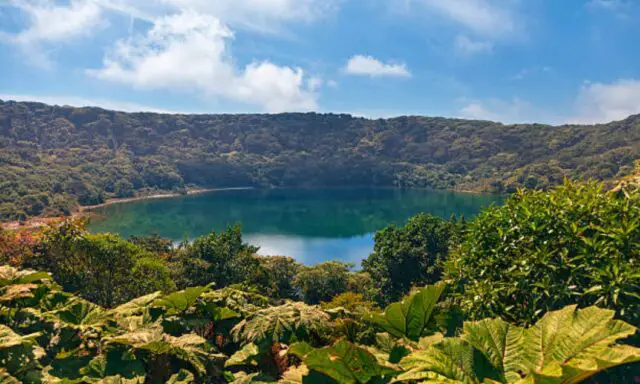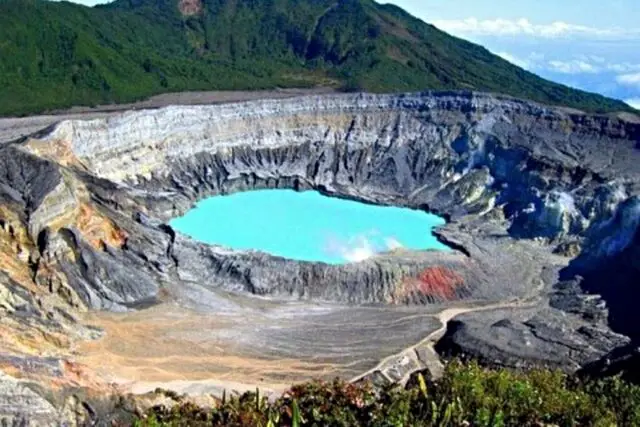To observe the majestic crater of the Poás volcano in Costa Rica, you have to have a good share of luck so that the clouds, at 2,700 meters of altitude, move away and clear a scene that amazes hundreds of thousands of local and international tourists every year.
Located in the Central Volcanic Mountain Range, Poás has one of the largest craters in the world with a diameter of 1,320 meters and a depth of 300 meters, adorned with light blue water. This lagoon rich in sulfur and acids measures 400 meters in diameter and is capable of causing acid rain when it dries up.
Majestic
This wonderful scene of the crater of gray and black tones, together with the fumaroles, is observed by tens of thousands of tourists who every year come to the site to get to know the active volcano up close. Although it does not expel lava, the Poas maintains a constant activity of gas emanation in the fumaroles and sporadically of phreatic eruptions (gases and rocks).
The panorama offered by the crater is joined by the trails of the Poás Volcano National Park, which allow visitors to come into contact with a characteristic flora of the height and the cloud forest combined with the damage caused by volcanic gases.
Botos Lagoon

It is also possible to meet birds and playful squirrels, which little by little have become accustomed to the presence of tourists and approach them with curiosity. Another great attraction of this site is the Botos Lagoon, of pluvial origin and 400 meters in diameter, which covers an old volcanic crater with cold and crystalline waters. To get to the viewpoint of this green water lagoon, you have to go into the forest for about 20 minutes, often accompanied by the constant rain that characterizes the area.
Cloud forest
The typical rain of the cloud forest makes this National Park a very important source of water resources for Costa Rica and is the source of numerous rivers. This protected area is also home to 79 species of birds, among which the green toucan, the hummingbird, the quetzal, the hawk, the goldfinch and the yigüirro stand out, which is the country’s national bird. In addition, in the National Park the presence of coyotes, hammerheads, the coati, several species of felines, the sloth, the porcupine, squirrels, among others, stands out.
National Park

The Poás Volcano National Park, founded in 1971, is the oldest in Costa Rica and also the most visited with about 400,000 people a year, thanks to its proximity to the capital, San José, of just over 60 kilometers.
According to data from the National System of Conservation Areas (SINAC) the National Park covers 6,506 hectares of extension ranging from 1,200 meters above sea level to 2,708 in one of the highest peaks in Costa Rica. The constant activity of the volcano also poses a risk, before which the Park authorities have an emergency plan to quickly evacuate the site in case the colossus erupts.
Since 2005, the Poás began a cycle of phreatic activity that has not caused damage or injuries, but that has forced temporary closures of the National Park in order to protect the integrity of tourists.
The Poás volcano is considered one of the natural wonders of Costa Rica, a country that has positioned itself worldwide as a tourist destination par excellence for lovers of the environment and nature.
Costa Rica, a nation of 4.7 million inhabitants, received 2.53 million foreign tourists in 2014, who generated income close to 2.6 billion dollars. Tourism employs some 150,000 people directly and indirectly another 400,000 in this Central American country, which is home to about 4.5% of the planet’s biodiversity, which is one of its main attractions.

